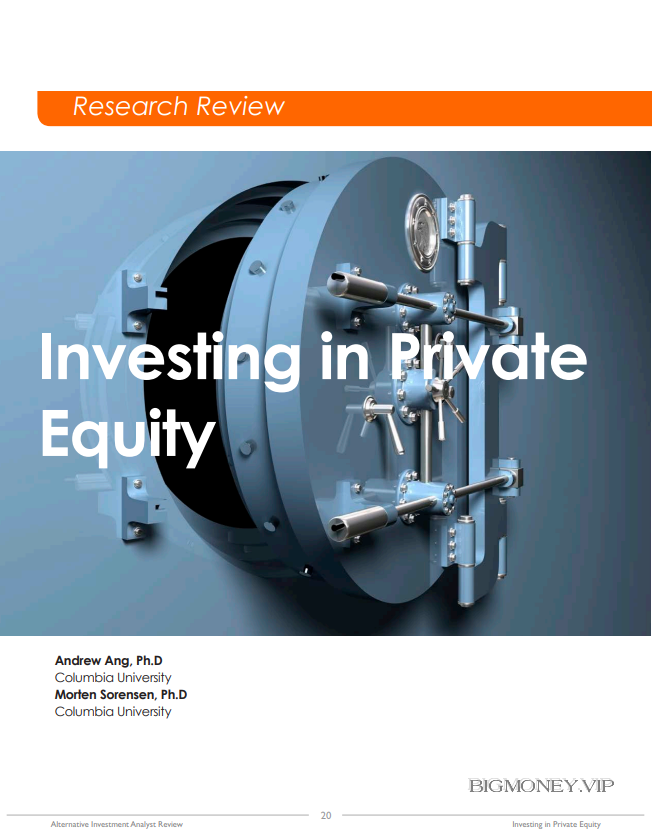Investing in Private Equity

1. Introduction
Private equity (PE) investments are investments in privately-held companies, that trade directly between investors
instead of via organized exchanges. PE is often considered a distinct asset class, and it differs from investments
in public equity in fundamental ways. There is no active market for PE positions, making these investments illiquid
and difficult to value. PE funds typically have horizons of 10-13 years, during which the invested capital cannot
be redeemed.
We survey the academic research concerning the risks and returns of institutional PE investments, as well as the
optimal holdings of PE in an investment portfolio. Researchers have had limited access to information about the
nature and performance of PE investments, and so research in this area is still preliminary and often inconclusive.
Institutional PE investments are typically made through a PE fund organized as a limited partnership, with the
institutional investors (typically pension funds or university endowments) as limited partners (LPs) and the PE firm
itself (such as Blackstone or KKR) acting as the general partner (GP). The GP manages the PE fund’s acquisitions
of individual companies (called portfolio companies). Depending on the type of portfolio companies, PE funds
are typically classified as buyout, venture capital (VC), or some other type of fund specializing in other illiquid non-
listed equity-like investments. Buyout funds invest in mature established companies, using substantial amounts of
leverage to finance the transactions. VC funds invest in high-growth start-ups, using little or no leverage. Kaplan
and Stromberg (2009) provide a detailed description of these investments and the development of the industry.
2. Estimating Private Equity Risk and Return
For traded assets, the risk and return are usually defined using the capital asset pricing model (CAPM) as the
alpha and beta coefficients estimated in the one-factor linear regression (the expected return regression),
Ri(t) - Rf(t) = α + β[Rm (t) - Rf(t)] +Ei
Here, Ri
(t) is the return earned by the investor from period t-1 to period t, Rf
(t) is the risk-free rate over this period,
and Rm(t) is the return on the market portfolio. The return earned on a financial asset from time t-1 to t is defined
as:




